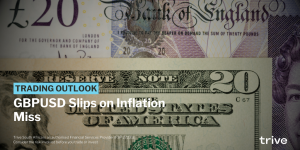
The AUDCHF currency pair has fallen victim to the Swiss franc’s relentless surge, extending its 2023 losses to over 8%. The key driver of the franc’s strength is the contrasting monetary policy stances of the Swiss National Bank (SNB) and the Reserve Bank of Australia (RBA).
The SNB has already embarked on a rate-hiking cycle, lifting its benchmark rate to 1.75% in December, while the RBA has maintained a more dovish stance, keeping rates unchanged at 2.85%. This divergence is expected to persist in the near future, with the SNB potentially considering further tightening to combat inflation, while the RBA may delay rate hikes due to concerns about slowing economic growth.
The Australian economy, while relatively resilient compared to others, is facing headwinds from the global slowdown and China’s economic woes. This could dampen commodity prices, which are crucial for Australia’s export-oriented economy, further pressuring the AUD.
Technical
The AUDCHF’s technical picture also suggests bearish momentum. The pair recently broke below a bearish triangle formation in the 4-hour chart, indicating potential continuation of the downtrend. Price action is trading below the 20-SMA (green line), 50-SMA (blue line) and 100-SMA (orange line), further reinforcing the bearish bias.
Short-term trading opportunities could exist towards the support level at the 0.57385 price level should the downward momentum be sustained. A break above the initial support could leave the 0.57208 support level as the next level of significance for the bears in the short term.
However, the RSI is in oversold territory (23.83), suggesting potential for a temporary bounce. Therefore, short-term trading opportunities could arise towards the initial resistance at 0.57752, should the bulls regain control of the price action and a pullback materialize. A break above the initial resistance would likely bring the 0.57943 and 0.58130 resistance levels into play in the short term.

Summary
The AUDCHF pair leans towards a bearish sentiment, driven by fundamental factors favouring the Swiss Franc’s strength. However, oversold conditions on the RSI signal the potential for a corrective move or consolidation. Short-term opportunities could favour bears targeting lower support levels, while a bullish reversal would require a break above the 0.57752 resistance level to signify a shift in momentum.
Sources: TradingView, Reuters, Trading Economics, Market Pulse, The Sydney Morning Herald.
Piece written by Mfanafuthi Mhlongo, Trive Financial Market Analyst
Disclaimer: Trive South Africa (Pty) Ltd, Registration number 2005/011130/07, and an Authorised Financial Services Provider in terms of the Financial Advisory and Intermediary Services Act 2002 (FSP No. 27231). Any analysis/data/opinion contained herein are for informational purposes only and should not be considered advice or a recommendation to invest in any security. The content herein was created using proprietary strategies based on parameters that may include price, time, economic events, liquidity, risk, and macro and cyclical analysis. Securities involve a degree of risk and are volatile instruments. Market and economic conditions are subject to sudden change, which may have a material impact on the outcome of financial instruments and may not be suitable for all investors. When trading or investing in securities or alternative products, the value of the product can increase or decrease meaning your investment can increase or decrease in value. Past performance is not an indication of future performance. Trive South Africa (Pty) Ltd, and its employees assume no liability for any loss or damage (direct, indirect, consequential, or inconsequential) that may be suffered from using or relying on the information contained herein. Please consider the risks involved before you trade or invest.




